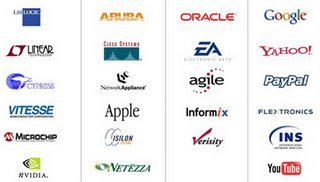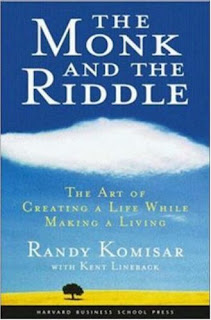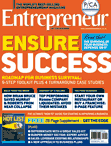The What? Why? When? and How? of Business Models
What?A business model is a description of the profit engine within the business; it is framework describing how the business will generate revenue in excess of costs.
Why?Very few entrepreneurs spend enough time thinking about and refining their business model. So many people approach a business venture with a predefined paradigm of how that venture will generate revenue that they never consider different business model options. Those who do think about how they can refine or apply a business model in a unique an innovative way often create huge amounts of value. Consider these recent examples:
- Netflix applied a “monthly subscription” business model to DVD rental as oppose to the traditional pay per use model.

- Flexcar apply a “pay per hour” business model to the rental car industry compared to the traditional pay per day
- Dry Soda apply a “wine distribution, positioning and pricing” model to a soda soft drink
When?Many entrepreneurs think that they need to have their business model completely refined and mapped out before they even begin. This may seem like the logical and safe thing to do but history would suggest that it my not be the best thing to do. Many of the most successful entrepreneurial companies in recent times have worked out their business model as they have gone along. Consider these examples:
- Google was formed as a company in 1998 but the pay per click advertising model that sustains the Google revenue line was only introduced in 2001 after they played with a number of different revenue generating options leveraging the page rank search algorithm.
- PayPal was launched as a business that would enable people to transfer money from one
 PDA to another, they only refined their business model into a per transaction service focused on eBay customers after 12 months in operation
PDA to another, they only refined their business model into a per transaction service focused on eBay customers after 12 months in operation - eBay was launched as sort of pet project by Pierre Omidyar. It was only after realizing that he would incur hefty web hosting bills that he realized he would need to turn it into a revenue generating business.
So the underlying message is, don’t rush into defining your business model. Come up with some ideas, test them, refine them and keep exploring until to unlock something that shows huge potential.
How?Many of the most successful business models in an industry have been created by borrowing ideas from another industry or by combining elements of different kinds of business models. Look outside your industry. Consider where other business models seem to be succeeding and consider whether such a business model could be effectively in your circumstance. Could you apply a pay per click model to your business? Would it make sense to become a broker? Would you rather have a subscription or a pay per use model?
As you do go about defining a business model, here are some key questions you can consider to bring clarity and focus to the process:
What are the sources of revenue for the business?Single or multiple revenue streams?
Payment terms – upfront, over a period of time or post delivery?
What are the cost drivers for the new business?Major costs incurred to generate revenue?
Nature of costs – fixed, variable or semi-variable?
Payment terms – upfront, over a period of time or post delivery?
What size capital investment is required to launch and sustain the business?To sustain a positive cash balance?
To make profit?
What are the critical success factors for this business?Identify the issues that will determine the success or failure of the business
..........................................................................
Business Model OptionsHere are some of the common types of web based business models that one could consider:
Brokerage - Brokers are market makers: they bring buyers and sellers together and facilitate transactions. Brokers play a frequent role in business-to-business (B2B), business-to-consumer (B2C), or consumer-to-consumer (C2C) markets. Usually a broker charges a fee or commission for each transaction it enables. The formula for fees can vary.
Examples:
eBay,
ExpediaAdvertising - The web advertising model is an extension of the traditional media broadcast model. The broadcaster, in this case, a web site, provides content (usually, but not necessarily, for free) and services (like email, IM, blogs) mixed with advertising messages in the form of banner ads. The banner ads may be the major or sole source of revenue for the broadcaster. The broadcaster may be a content creator or a distributor of content created elsewhere. The advertising model works best when the volume of viewer traffic is large or highly specialized. Examples:
Google,
Facebook
Infomediary - Data about consumers and their consumption habits are valuable, especially when that information is carefully analyzed and used to target marketing campaigns. Independently collected data about producers and their products are useful to consu

mers when considering a purchase. Some firms function as infomediaries (information intermediaries) assisting buyers and/or sellers understand a given market.
Examples:
Nielsen,
Farecast.com Merchant - Wholesalers and retailers of goods and services. Sales may be made based on list prices or through auction.
Examples:
Amazon.comManufacturer (Direct) - The manufacturer or "direct model", it is predicated on the power of the web to allow a manufacturer (i.e., a company that creates a product or service) to reach buyers directly and thereby compress the distribution channel. The manufacturer model can be based on efficiency, improved customer service, and a better understanding of customer preferences.
Examples:
Dell ComputerAffiliate - In contrast to the generalized portal, which seeks to drive a high volume of traffic to one site, the affiliate model provides purchase opportunities wherever people may be surfing. It does this by offering financial incentives (in the form of a percentage of revenue) to affiliated partner sites. The affiliates provide purchase-point click-through to the merchant. It is a pay-for-performance model -- if an affiliate does not generate sales, it represents no cost to the merchant. The affiliate model is inherently well suited to the web, which explains its popularity. Variations include, banner exchange, pay-per-click, and revenue sharing programs. Examples:
Google Adsense,
Amazon AssociatesCommunity - The viability of the community model is based on user loyalty. Users have a high investment in both time and emotion. Revenue can be based on the sale of ancillary products and services or voluntary contributions; or revenue may be tied to contextual advertising and subscriptions for premium services. The Internet is inherently suited to community business models and today this is one of the more fertile areas of development, as seen in rise of social networking.
Examples:
Red Hat,
WikipediaSubscription - Users are charged a periodic -- daily, monthly or annual -- fee to subscribe to a service. It is not uncommon for sites to combine free content with "premium" (i.e., subscriber- or member-only) content. Subscription fees are incurred irrespective of actual usage rates. Subscription and advertising models are frequently combined.
Examples:
37Signals,
NetflixUtility - The utility or "on-demand" model is based on metering usage, or a "pay as you go" approach. Unlike subscriber services, metered services are based on actual usage rates.

Traditionally, metering has been used for essential services (e.g., electricity water, long-distance telephone services). Internet service providers (ISPs) in some parts of the world operate as utilities, charging customers for connection minutes, as opposed to the subscriber model common in the U.S.
Examples:
Amazon S3The typology for different business model types is adapted from work by Professor Michael Rappa at University of North Carolina -
digitalenterprise.org

























 that allows you to collaborate online with others in the process of developing your business plan. it has received excellent reviews and in my opinion is a really useful planning tool. Give it a try - you get a 30 day free trial.
that allows you to collaborate online with others in the process of developing your business plan. it has received excellent reviews and in my opinion is a really useful planning tool. Give it a try - you get a 30 day free trial.


 Success in the business world can be compared to surfing: A surfer sits on their surf board behind the breaking waves staring out at the horizon watching for the next big wave. When they see a big wave building up they turn their board toward the shore, lie down and begin paddling to build some forward momentum so that when the wave reaches them, they can catch it and ride it towards the shore. The bigger and more powerful the wave the better the ride. To be successful in business one also needs to ride waves, these waves are called trends. As an entrepreneur one needs to be “looking over the horizon” for the next big trend and positioning oneself to ride the trend when it arrives. The bigger and more powerful the trend the more successful the ride.
Success in the business world can be compared to surfing: A surfer sits on their surf board behind the breaking waves staring out at the horizon watching for the next big wave. When they see a big wave building up they turn their board toward the shore, lie down and begin paddling to build some forward momentum so that when the wave reaches them, they can catch it and ride it towards the shore. The bigger and more powerful the wave the better the ride. To be successful in business one also needs to ride waves, these waves are called trends. As an entrepreneur one needs to be “looking over the horizon” for the next big trend and positioning oneself to ride the trend when it arrives. The bigger and more powerful the trend the more successful the ride.
